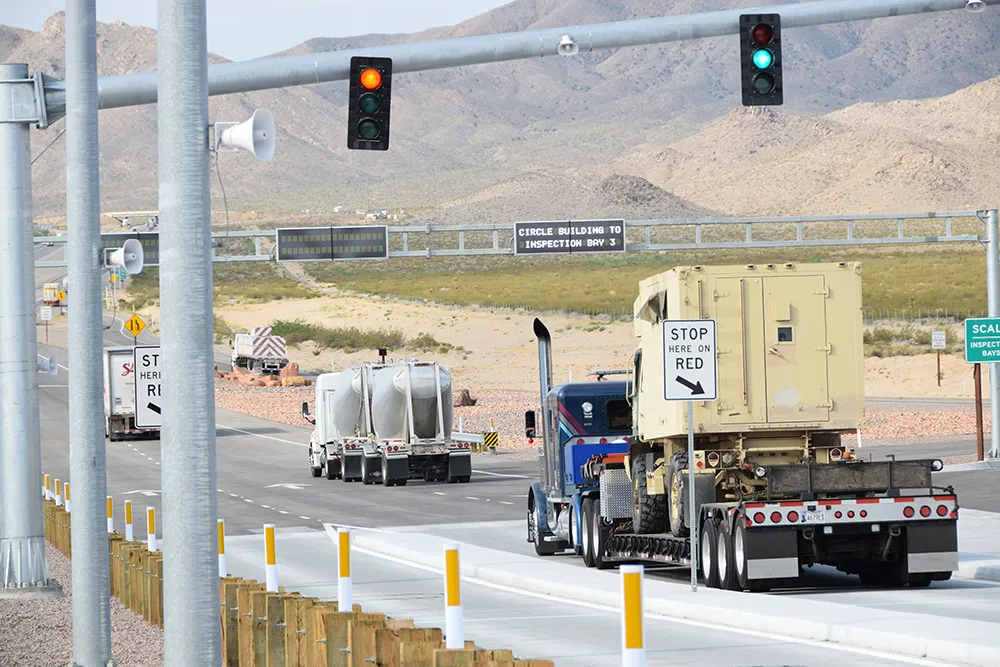Developed by UK vehicle safety specialists Sentinel Systems, the Bike Hotspot is designed to reduce the number of accidents involving cyclists and commercial vehicles. The system is designed to sense when a cyclist is within the blind spot of a large vehicle, a common cause for fatal accidents especially when the vehicle is manoeuvring or turning left. It comprises four of Sentinel’s safety aids including a front corner system, side scan system, a side camera and an external sounder and can be customised to
February 17, 2015
Read time: 2 mins
Developed by UK vehicle safety specialists Sentinel Systems, the Bike Hotspot is designed to reduce the number of accidents involving cyclists and commercial vehicles. The system is designed to sense when a cyclist is within the blind spot of a large vehicle, a common cause for fatal accidents especially when the vehicle is manoeuvring or turning left.
It comprises four of Sentinel’s safety aids including a front corner system, side scan system, a side camera and an external sounder and can be customised to meet the needs of the vehicle and the driver. External scanning sensors are fitted along the nearside of the vehicle and on the front corner and are linked to an internal audio warning to alert the driver when there is a potential hazard. An external alert is also sounded to warn the cyclist or pedestrian that the vehicle is turning left.
The system has an option to silence the alerts at night time and alternative LED warning lights can be used to notify drivers and cyclists. The scanners are programmed to detect cyclists at a particular distance and height to avoid sensing cars or pedestrians that are not at risk. A controller area network bus module has also been incorporated to ensure that the system is only activated when the vehicle is manoeuvring at a speed below 10mph.
Each system can be adapted to the needs of the vehicle with a range of side cameras available. The cameras are connected to an internal monitor inside the cab so that the driver is visually aware of any cyclists.
For extra vehicle safety optional additional monitors and rear cameras can be added for a wider view of the vehicle’s surroundings. The rear view camera can detect when an obstruction is near that is likely to cause damage to the vehicle, preventing costly repairs and vehicle down time. Additionally, all vehicles can be fitted with a mobile digital video recorder with up to eight channels, providing footage for reference in a defence or claims situation, or for live viewing and surveillance.
It comprises four of Sentinel’s safety aids including a front corner system, side scan system, a side camera and an external sounder and can be customised to meet the needs of the vehicle and the driver. External scanning sensors are fitted along the nearside of the vehicle and on the front corner and are linked to an internal audio warning to alert the driver when there is a potential hazard. An external alert is also sounded to warn the cyclist or pedestrian that the vehicle is turning left.
The system has an option to silence the alerts at night time and alternative LED warning lights can be used to notify drivers and cyclists. The scanners are programmed to detect cyclists at a particular distance and height to avoid sensing cars or pedestrians that are not at risk. A controller area network bus module has also been incorporated to ensure that the system is only activated when the vehicle is manoeuvring at a speed below 10mph.
Each system can be adapted to the needs of the vehicle with a range of side cameras available. The cameras are connected to an internal monitor inside the cab so that the driver is visually aware of any cyclists.
For extra vehicle safety optional additional monitors and rear cameras can be added for a wider view of the vehicle’s surroundings. The rear view camera can detect when an obstruction is near that is likely to cause damage to the vehicle, preventing costly repairs and vehicle down time. Additionally, all vehicles can be fitted with a mobile digital video recorder with up to eight channels, providing footage for reference in a defence or claims situation, or for live viewing and surveillance.








